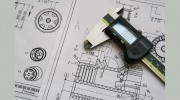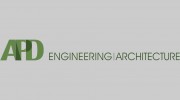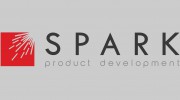Nonlinear Engineering is a consulting firm that specializes in providing off-site services to manufacturing and research & development organizations. Our services encompass product and process simulation, optimization, and design assistance, with a focus on delivering innovative and cost-effective solutions for our clients. With extensive expertise in finite element analysis and custom computer code development, Nonlinear Engineering is dedicated to helping businesses reduce development costs, accelerate time-to-market, and improve product performance.
Areas of Expertise
Nonlinear Engineering's areas of expertise include:
- Linear and Nonlinear Structural Analysis
- Blast and Ballistic Penetration Analysis
- Impact/Crash Analysis of automotive and other systems
- Heat Transfer and Thermal Stress Analysis, including solidification of shaped castings
- Forming Analysis, including sheet metal forming, hydroforming, and forging
Our expertise extends to the use of advanced finite element code LS-DYNA for all forms of simulation, as well as design and pre/post processing with HyperWorks.
Benefits of Nonlinear Engineering's Services
The use of Nonlinear Engineering's simulation and analysis services provides several advantages over more conventional methods of problem solving, including:
- Reduced development cost by prototyping on the computer using simulation rather than building physical models or tooling
- Reduced time to market since simulation is typically much faster than trial and error prototyping
- The reduced cost of simulation allows for the examination of more possibilities, resulting in a more optimized product
- Simulation provides solutions to manufacturing difficulties and in-service product failures
- Sensitivity analyses of products and processes can be performed before prototypes or tools are built
- Used as a forensic tool, simulation can answer questions about and provide solutions to manufacturing problems, product failures, and performance deficiencies
Simulation Process
Nonlinear Engineering's simulation process involves the following steps:
1. The Question: The customer will typically have a simple question, such as "Will the bracket in this drawing support a 4800 Newton force?"
2. Refine the Question: The initial question is often too general, and it is necessary to get more detail in order to model the part or process effectively.
3. Define Modeling Objectives: Based on the refined question, define the modeling objectives, such as solving for equivalent stresses and determining high stress areas, and recommending design improvements.
4. Formulate the Model: Use basic engineering principles to establish boundary conditions and loading conditions.
5. Create Geometry: Create a three dimensional representation of the part using various tools.
6. Create Finite Element Mesh: Break the object into small (finite sized) pieces (elements) and create a mesh.
7. Computer Solution: Use a computer to solve the equation for each element, taking into account the dependencies between elements.
8. Examine Results: Analyze the results and identify high stress areas or other issues.
9. Recommendations: Provide recommendations for design improvements based on the analysis.
Additional Benefits of Modeling
Modeling also offers the following benefits:
- Provides insights into the performance of products and processes, allowing for optimization and improvement
- Enables the examination of different scenarios and "what-if" analyses
- Reduces the need for physical prototyping and testing, saving time and resources
- Provides a basis for testing and validating designs before production
- Enhances collaboration and communication between teams by providing a common understanding of the product or process

Be the first to review Nonlinear Engineering.
Write a Review





